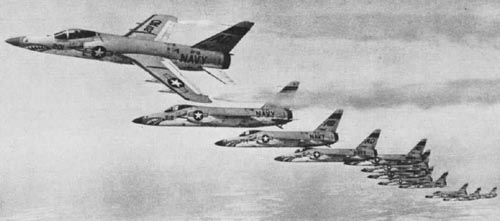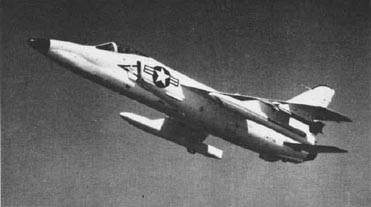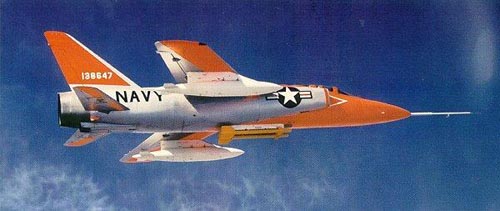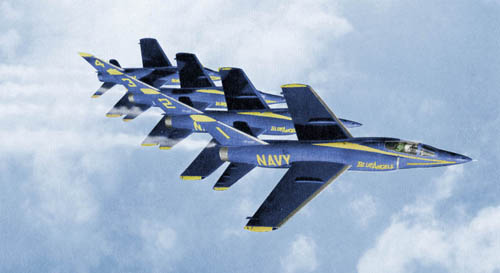 |
||||||
|
||||||
|
|||||||
 |
|||||||
| Grumman F11F Tiger | |||||||
The F11F-1 was originally planned as a derivative of the F9F-6 Cougar in the year 1952, the idea was to make the Cougar supersonic by means of modified wings. But the changes made until 1953 were so big, that there was technically no more resemblance at all. The Tiger’s wing was much narrower in its section and hat a lot of changes on Ailerons and spoilers. While the wings of other planes were folded up or to the back, the wing tips of the Tiger were fold downwards. Another unique feature of the Tiger was a fuel tank in its Horizontal Stabilizer. The prototype flew first on July 30th 1954 and almost reached Mach 1, but it didn’t have an afterburner yet. The second prototype had an afterburner and supersonic capability. That made the F11F-1 the second U.S.Navy Aircraft capable of flying faster than the speed of sound, second only to the F4D Skyray. |
|||||||
|
|||||||
|
|||||||
|
|||||||
|
|||||||
| Grumman was planning an upgraded version under the designation F11F-1F Super Tiger, which had bigger air intakes, a stronger Engine, improved avionics and a higher payload. In 1956, two regular Tigers were converted to that standard. One of them reached a velocity of Mach 2.04 and a height of 80.250ft or 24.466m. Since the U.S. Navy didn’t order mass production, the Super Tiger was advertised to the Air Forces of Allied Nations like Canada, West-Germany and Japan. But due to the Lockheed bribery scandal, those nations bought the F-104 Starfighter which was more expensive and inferior to the Super Tiger in many ways. |
|||||||
|
|||||||
| However, the F11F-1 Tiger became most famous as the plane of the Blue Angels. The U.S.Navy acrobatic team adopted Tigers in 1957 and flew them for twelve years, until long after the Tiger had retired from active duty. The Blue Angels flew the short-nosed version first and later converted to the long-nosed version. While using the Tiger, the Blue Angels introduced the Delta-Formation with 6 aircraft and toured Europe for the first times in 1965 and 1967. During that time the paint scheme the Blue Angles use until today was also invented. |
|||||||
|
|||||||
| wingspan: 9.6m length: 14.3m height: 4.0m empty weight: 6500kg max loaded weight: 9650kg maximum speed: 1170km/h range: 2050km |
|||||||
| return to top |




